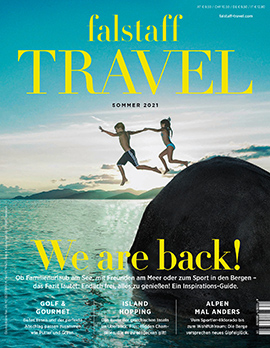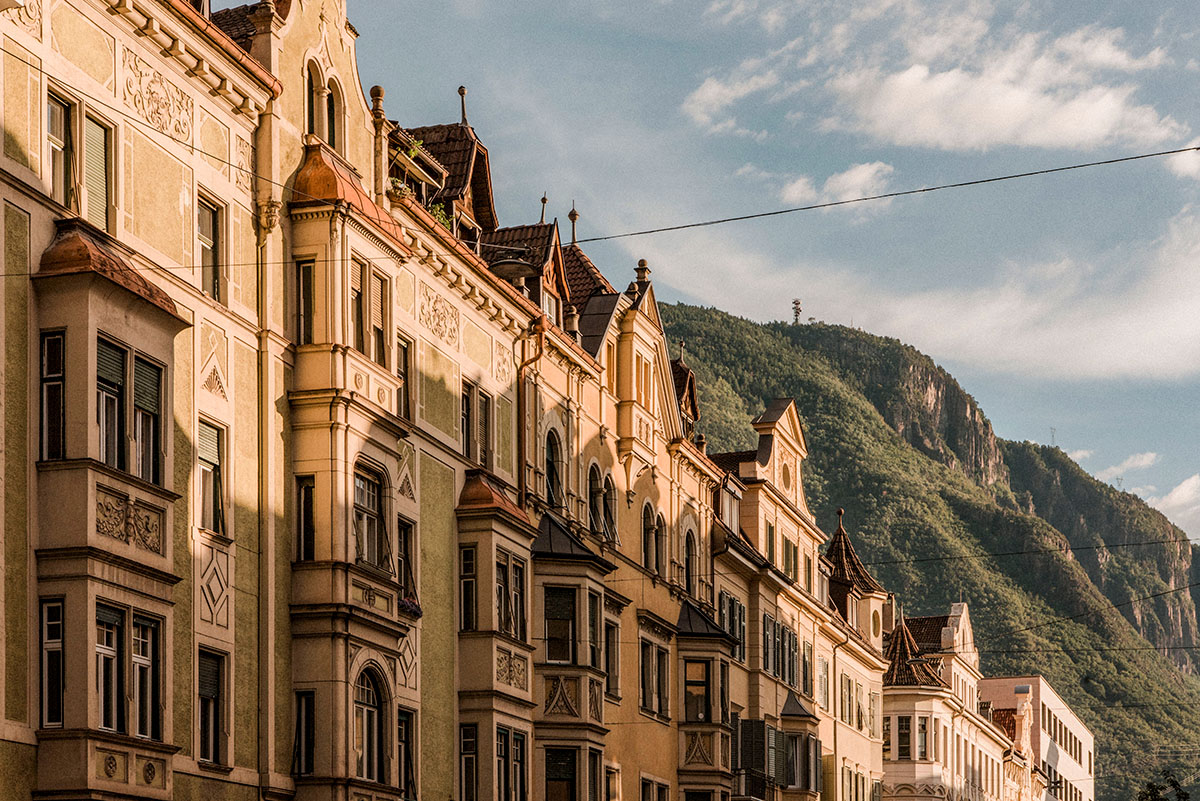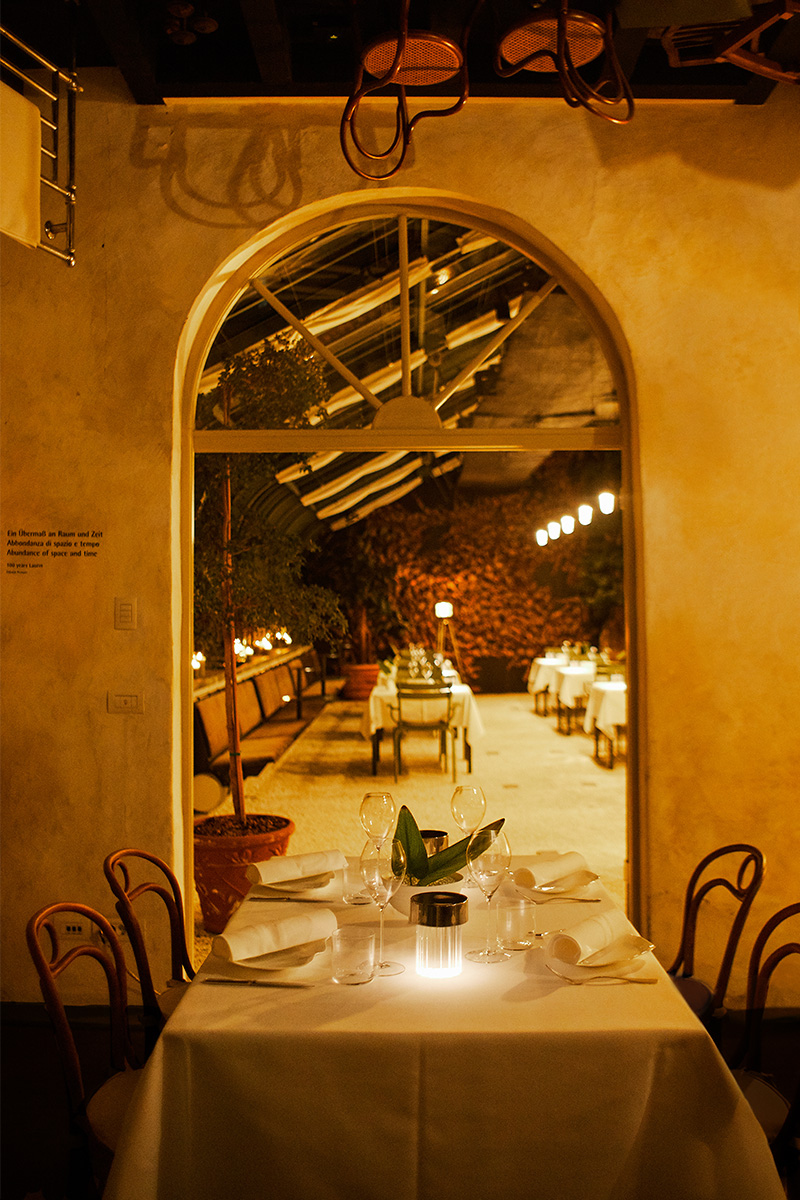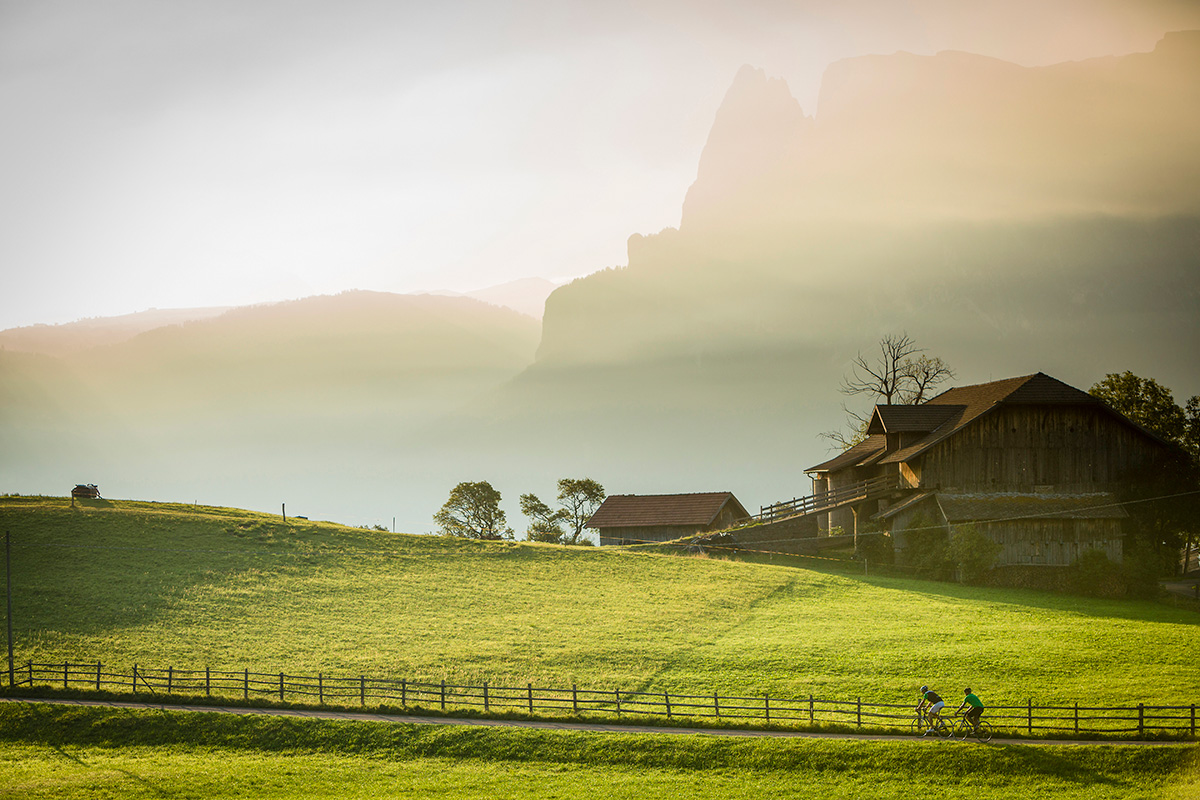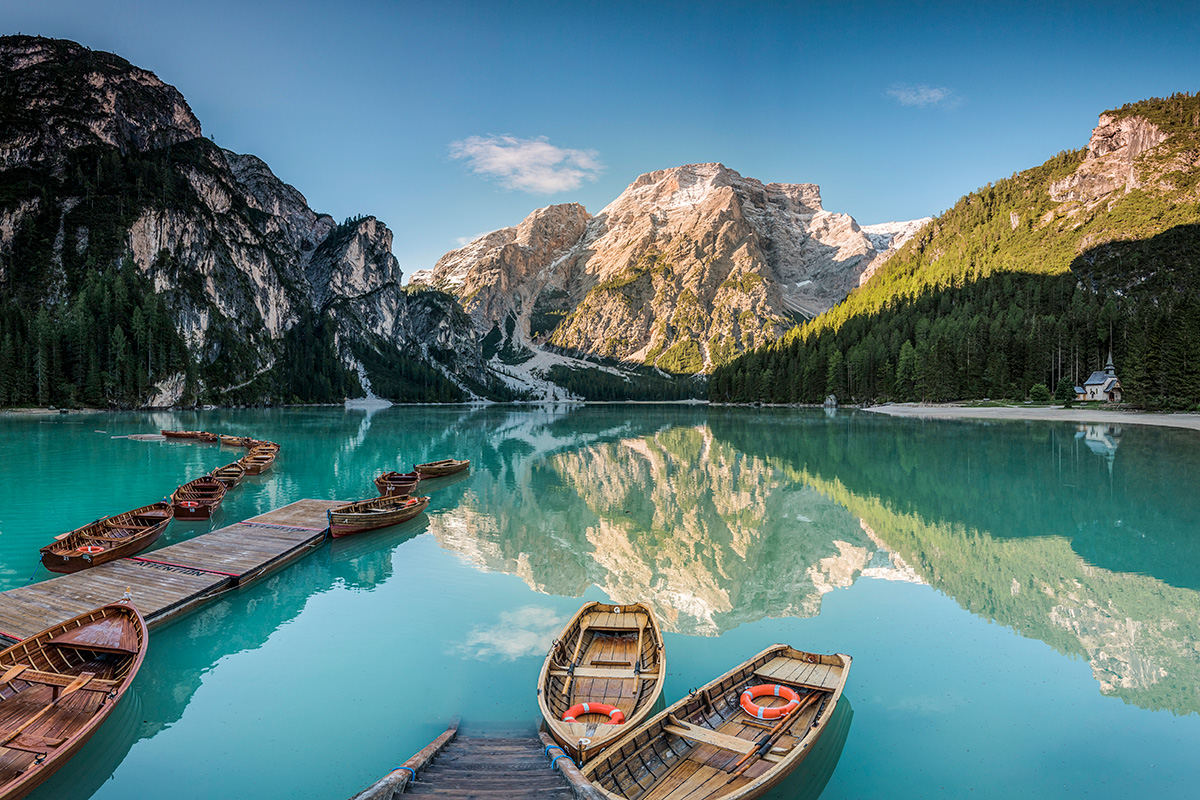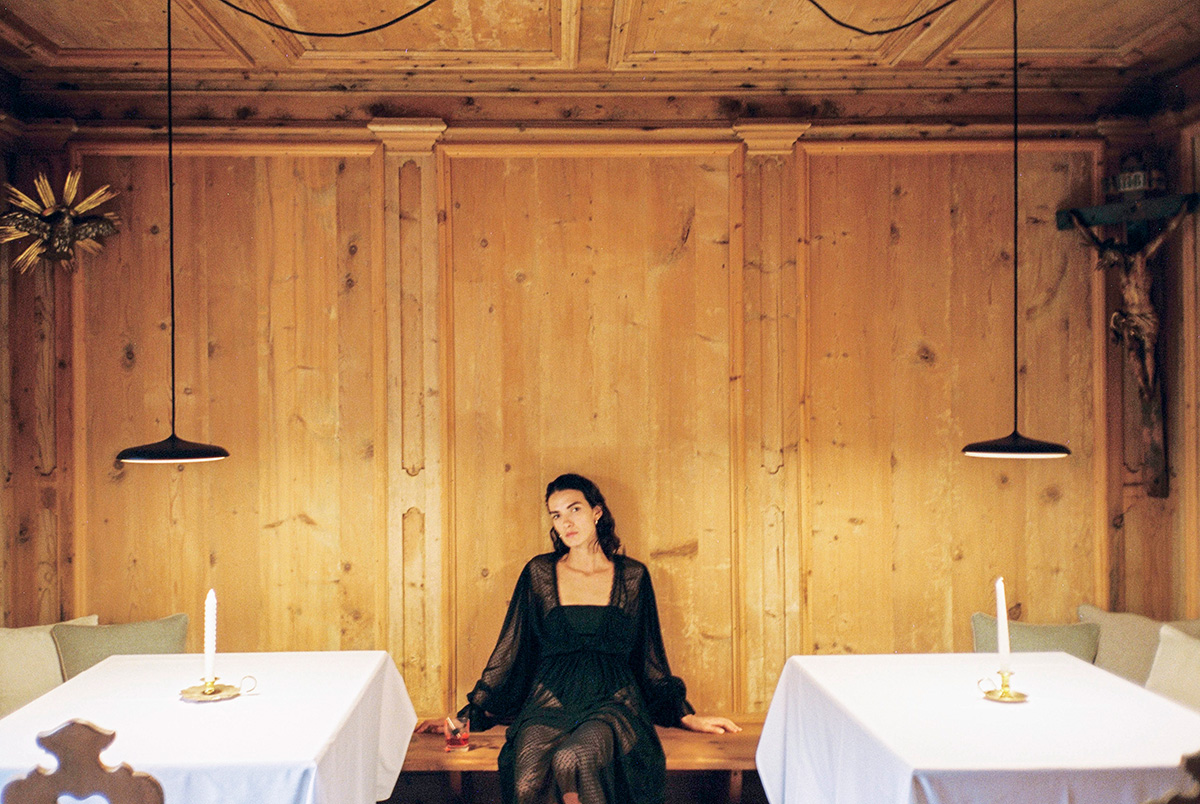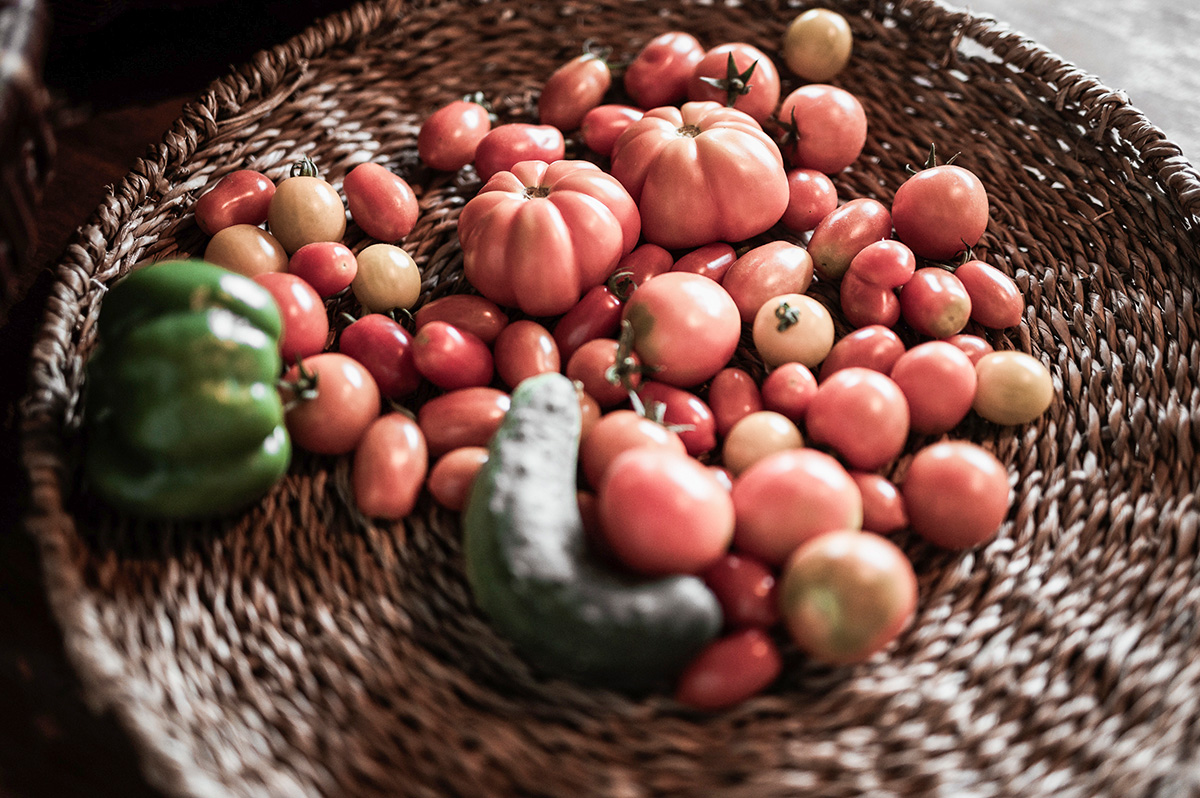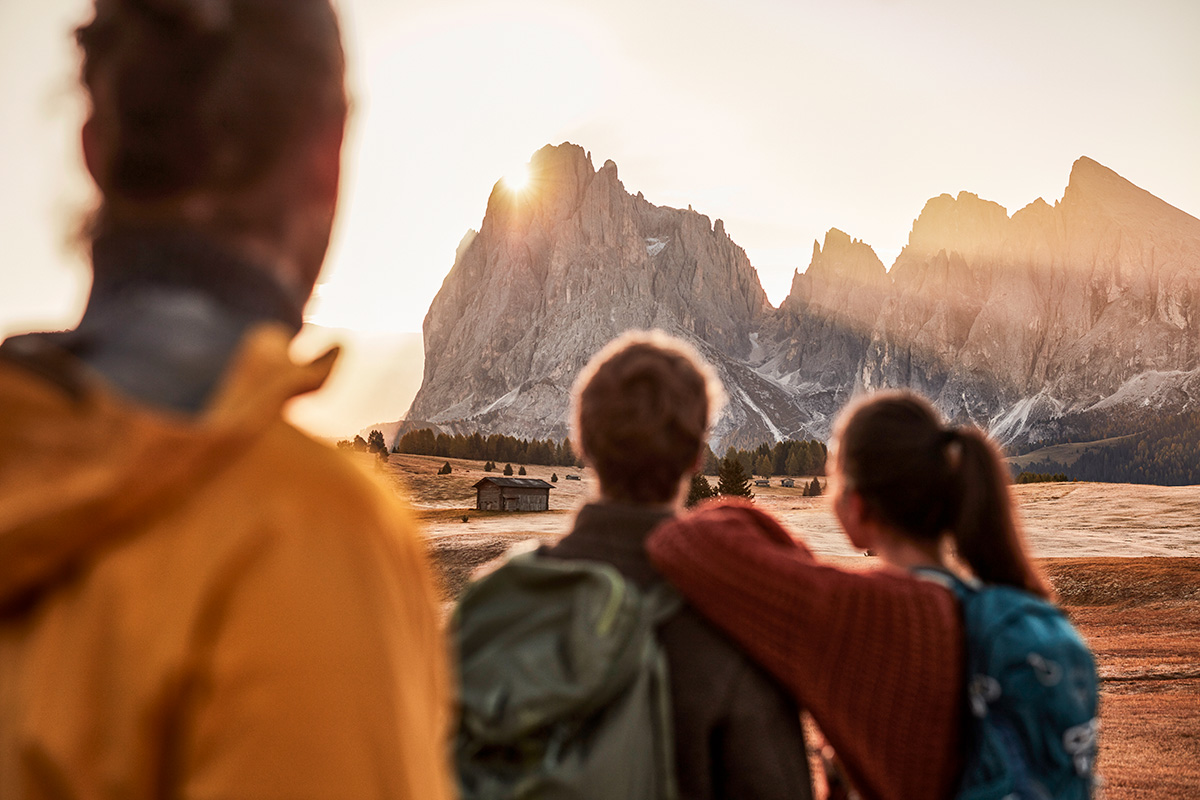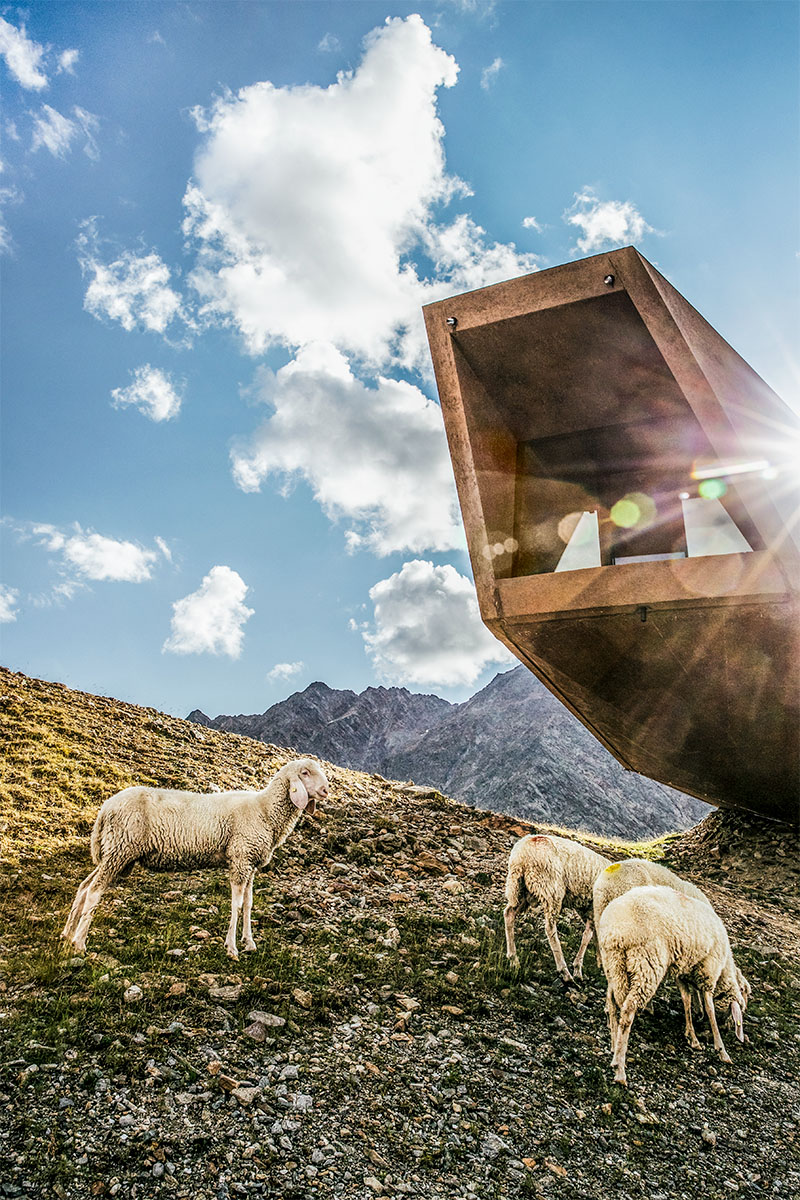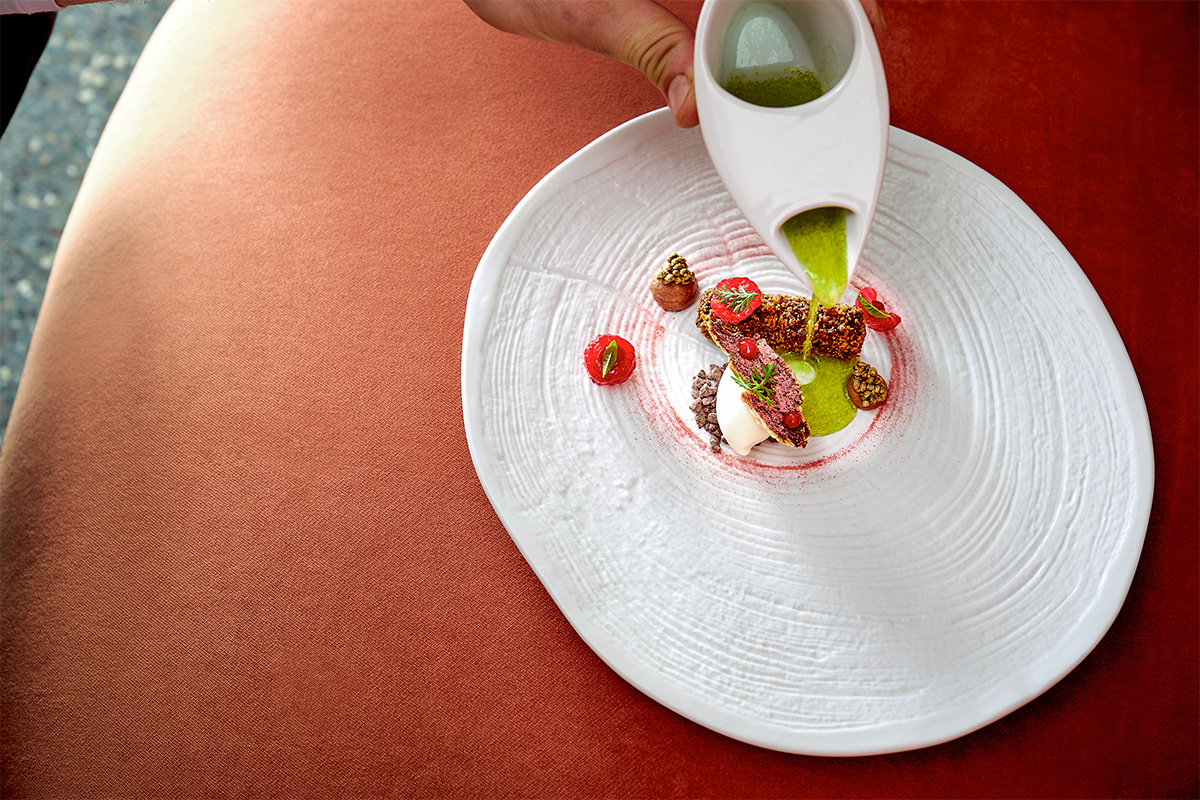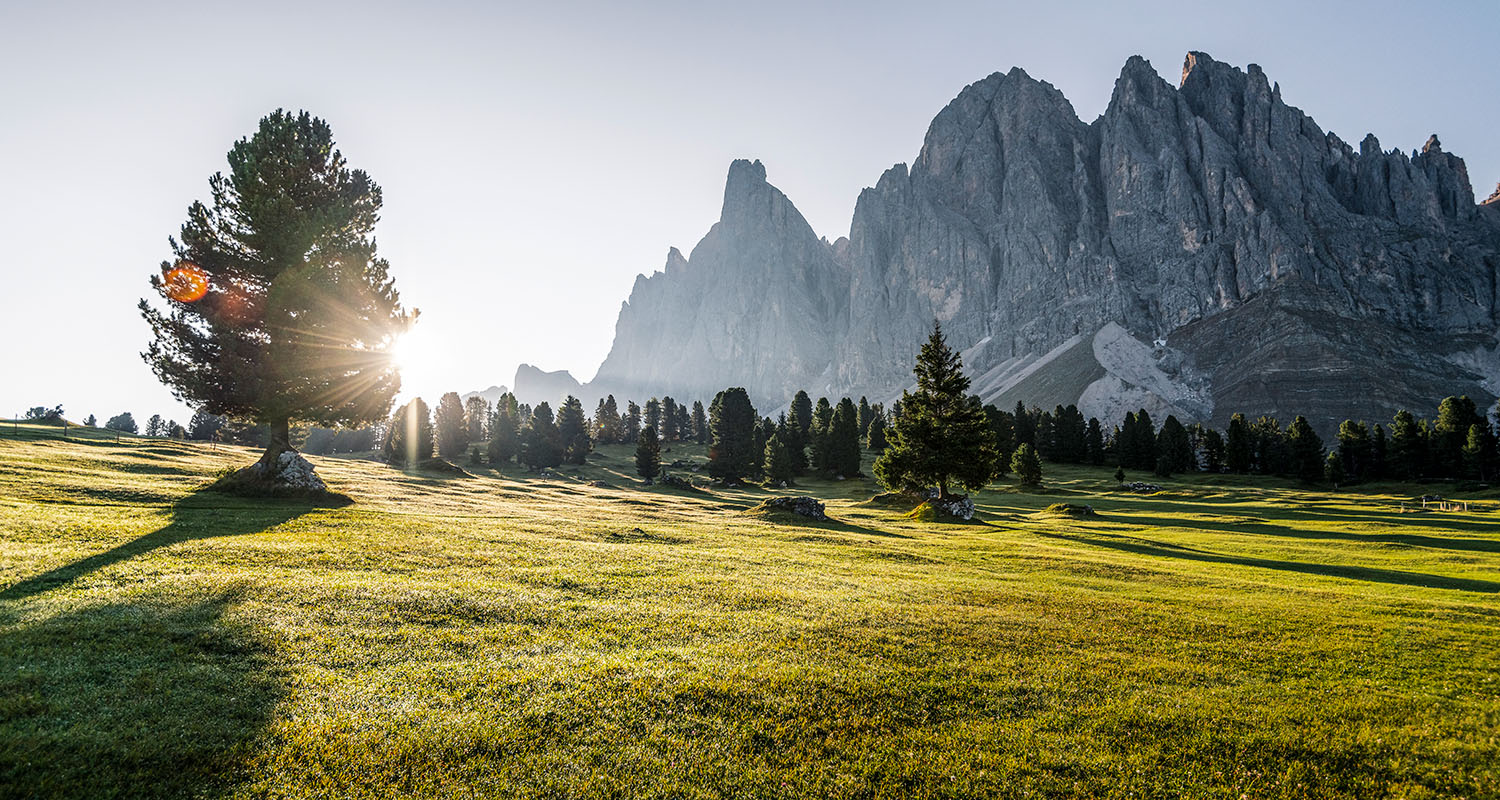
Fascination South Tyrol: Back to the Origin
Maximum variety without long distances: the wonder world of the Dolomites shows the richness that comes from reducing things to the essentials. Chic cities such as Merano and Bolzano invite you to stroll - and in the culinary world, tradition and innovation enter into creative fusions.
August 28, 2023
Bay windows characterize the city center of Bolzano. © Marlene Mauer
Craggy peaks rising behind gentle green alpine pastures: the contrasts couldn't be greater than in the unique landscape of the Dolomites. At sunset, a strong orange-red is added, as if the mountains were on fire; Burning Dolomites is the name given to this intense alpenglow. The French geologist Déodat de Dolomieu (1750-1801) gave the Dolomites their name and also clarified where this mysterious glow comes from - namely from the high magnesium content in the rock.
The restaurant "Contanima" in the Parkhotel Laurin from 2021 focuses on contemporary cuisine with respect for local tradition. It will reopen in October 2023. © provided
Since 2009, the Dolomites have been a UNESCO World Heritage Site, the imposing Three Peaks are just one of many highlights that a trip to South Tyrol has to offer. A mere 7,389 square kilometers in size, the region - yet feels in part like a continent. Three official languages are spoken: German, Italian and Ladin. 300 days of sunshine a year are ideal for extending the summer well into the fall. Part of the fascination of South Tyrol is maximum diversity, like two climatic zones in half an hour: from the fertile wine region on Lake Kaltern, the warmest bathing lake in South Tyrol at 28 degrees, a road winds up to the high plateaus. Nothing is hectic here; cows and sheep graze serenely on lush meadows. Afterwards, it sometimes feels as hot in Bolzano as it does in southern Italy, you're suddenly in the summer resort zone and can breathe again. On the Alpe di Siusi, the largest high alpine pasture in Europe, 790 plant species can be discovered.
Extreme landscape
On a slow-motion tour by bicycle © Daniel Geiger
This, too, is typical of South Tyrol: rustic farmhouses lie next to stylish hotels. The infinity pool density is high, luxury accommodations like the Alpin Panorama Hotel Hubertus set new architectural standards in wellness. In boutique hotels like the Villa Arnica vintage sofas meet new design. What goes on the plates grows in the garden. Modernity and tradition, cultivation of customs and forward thinking grow together organically in South Tyrol. What elsewhere causes tension, enters into creative fusions here, complements and inspires each other.
The Pragser Wildsee is located at 1500 meters above sea level - if you want it warmer, visit the Kalterer See © Harald Wisthaler
Awakening and isolation have always been close to each other in this extreme landscape between Italy and Austria. During World War I, the area was bitterly fought over, with a grueling war of position at the highest altitudes. At that time, the Austrians built an elaborate system of cable cars to transport material to the peaks - the Dolomites still benefit from this today. They are very well developed for tourism. At the same time, the locals have remained a bit like their landscape: like monoliths that are nothing but further away from bending their minds. They are modest in an almost defiant way, but also enormously hospitable and cosmopolitan. Local authenticity and internationality aren't mutually exclusive. It's precisely this tension that makes South Tyrol so fascinating.
Mundane and alpine
The Villa Arnica in Lana, set amidst vineyards, combines vintage with contemporary design © provided
The most beautiful way to travel is by train. When the locomotive drags itself past deep gorges, the deceleration already begins on the way. In Brennero/Brenner a stop is made, guests get off briefly to enjoy the cool air. It's hard to believe that fortified roads were built here as early as Roman times; in the Middle Ages, Brennero was the most frequently passed Alpine pass. Gourmets, extreme mountaineers, jet-set eccentrics, thermal fans with family, leisurely hikers, mountain bikers: in South Tyrol there's something for everyone. For Cortina d'Ampezzo, one of the most exclusive ski destinations in Europe, you should upgrade your wardrobe, while in the mountain village of Corvara it's more casual. And in Bolzano, you can stroll from one café to the next, enjoying Italian lifestyle that meets Alpine flair - and marvel at the most famous glacier mummy, Ötzi, in the Archeology Museum. Merano scores with its chic thermal spa of Matteo Thun and has delighted more than just Empress Sisi as an elegant spa.
Local products come directly from the garden to the plates in the Villa Arnica © provided
The tourism association advertises with dumplings and spaghetti - in South Tyrol it's almost an art to eat badly. The products come from the region, it's part of the pride of the South Tyroleans that nothing inferior ends up on the plate. And, of course, not in the glass either: with Vernatsch and Lagrein, there are even grape varieties that have their origins in South Tyrol. When it comes to culinary delights, too, the motto is maximum variety in the smallest possible space: this can be a Brettljause (snack) in a mountain hut or world-class fine dining. 25 Michelin stars make South Tyrol the province with the highest density of star restaurants in Italy. Ladin cuisine is trendy because it revives old peasant recipes: Jufa, a milk pudding dish, is best eaten straight from the pot; after a long hike, there's nothing more delicious than Panicia (barley soup) or Cajinci Te Ega (Schlutzkrapfen), which will give you new strength.
Boulders with a view
The Alpe di Siusi is the largest high alpine pasture in Europe and a hotspot to experience perfect sunsets © Andreas Mierswa
South Tyrol has always been a pioneer when it comes to sustainability. Just like with the cuisine, there's no difference in architecture: 348 farm buildings are listed as historic monuments, more than 1,000 mountain farms are committed to species-rich mountain meadows, and 20 percent of the farms keep cattle breeds that are threatened with extinction. As a natural raw material, wood defies extreme weather conditions, and nowhere do mountain museums blend so perfectly into the barren surroundings. For the Messner Mountain Museum Corones on the summit plateau of Kronplatz, star architect Zaha Hadid had concrete hatches grow out of the earth to match the color of the rocks. The actual museum is carved into the mountain like a foxhole, as if nature itself had carved a cave. The Pass Museum at Timmelsjoch also juts into the mountains like a boulder. It not only builds a bridge between Tyrol and South Tyrol, but is also a selfie hotspot. Even the grazing sheep know how to take pictures here - this is typical of South Tyrol.
Sheep in front of the pass museum at Timmelsjoch © Tina Sturzenegger
Dessert at the Hotel Castel © Annette Sandner
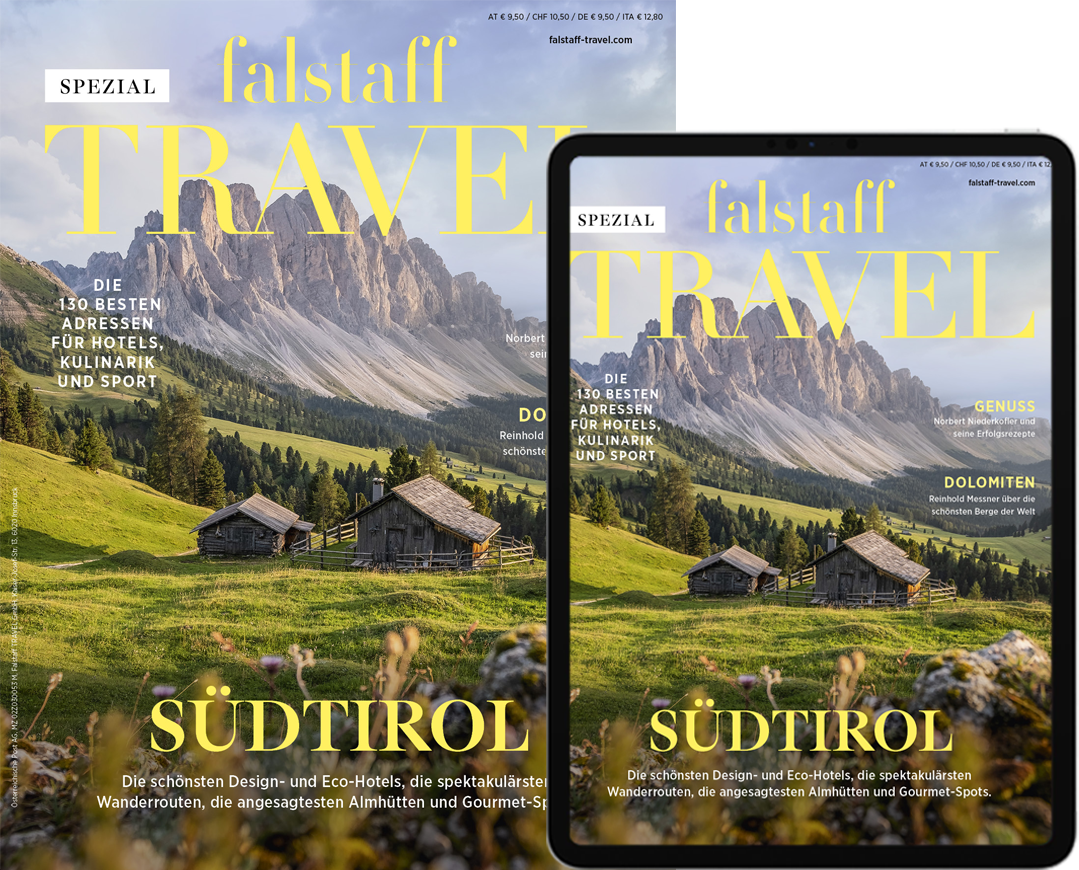
This article appeared in the Falstaff TRAVEL issue South Tyrol Special 2023.
